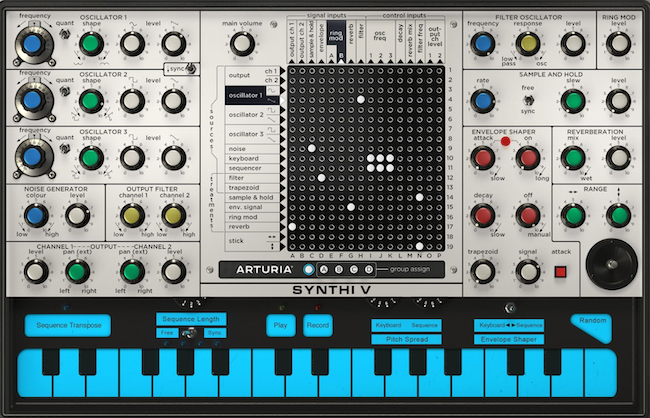
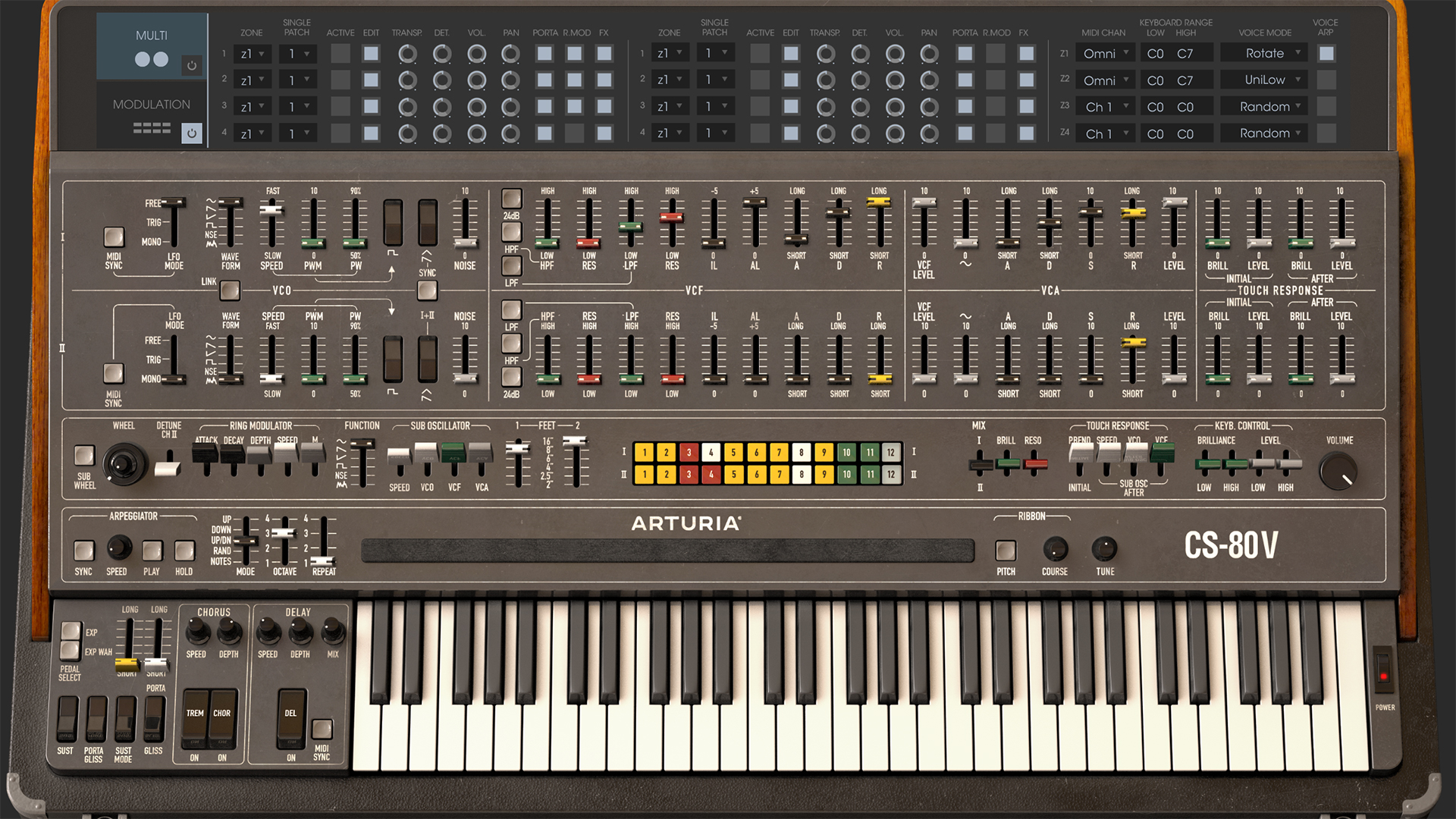
Arturia's virtual historic synth collection is brilliant for composing original music, sound effects and backgrounds. And in some ways, the emulations are better than the originals.
I'm old enough to remember many of the keyboards in Arturia's V collection from the first time around. I owned some of them. I remember their features and their foibles. Most of all, I remember that they were amazing then and they're amazing now, with their new and optimistic sounds more relevant than they've ever been.
That is if they're still working. Old synths can be temperamental. The earliest ones might have dodgy dry joints and failing capacitors. Newer examples have those issues plus the nuance of having to source some extremely specialised chips if they need repair.
And if cantankerous nature of the hardware doesn't put you off, the prices almost certainly will. Classic synths in good condition can cost thousands. If you buy one cheaply, you'll almost certainly pay the same again getting it serviced.
If only there was an alternative...
Well, quite obviously, now there is.
What is a virtual synthesiser?
Thirty or forty years ago, when the synths emulated by Arturia were in the shops for the first time, personal computers were not so powerful. The best audio experience you could expect from a PC was an untunable bleep.
But now that computers are thousands of times faster, they're able to recreate these historic sounds with software.
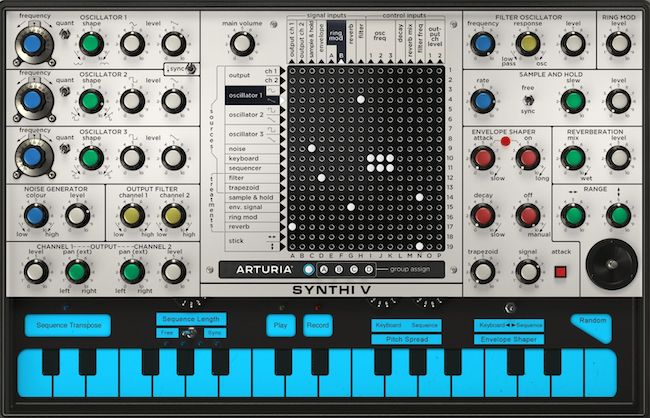
To play a virtual synth, you'll need a keyboard. There are dozens of them available, including some by Arturia, and they're not expensive. This one is 199 Euros. Arturia's keyboards are closely integrated with the software, which can save you time mapping the physical controls to the software features.
But just about any MIDI keyboard will work. If your keyboard only has MIDI outputs, you'll need a MIDI to USB adapter. Most modern keyboards have built-in USB and this is class-compliant, so you shouldn't need to load any drivers. But you will need to select your MIDI input from within the software - even if there's only one of them.
The Arturia V Collection instruments can work stand-alone. You just click on the icon for the instrument you want and it loads up in its window, ready to play, or you can use them as plug-ins in your Digital Audio Workstation (DAW) of choice. This is the mode to use if you want to record and edit what you've played.
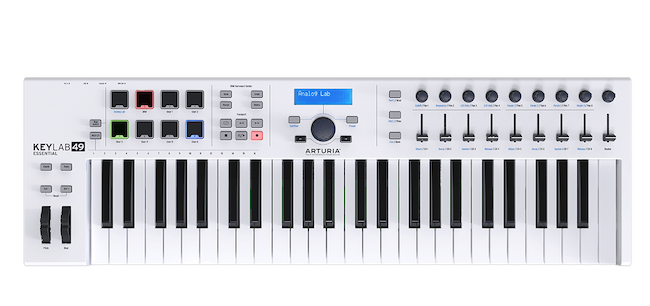
The keylab essential keyboard, which closely integrates with the synth simulation software
Sounds
The sound collection contains what is essentially a Hall of Fame of 20th Century instruments. Here's the list:
- Mellotron V
- Synthi V
- CZ V
- Analog Lab (An Arturia App that helps you find patches and play them with effects)
- Clavinet V,
- CMI V
- DX7 V
- Buchla Easel V
- Synclavier V
- B-3 V, Mini V
- Piano V
- Stage-73 V,
- Matrix-12 V
- Farfisa V
- Solina V
- SEM V
- Wurli V
- Jup-8 V
- ARP 2600 V
- CS-80 V
- Prophet V
- VOX Continental V
- Modular V
Just finding those instruments in real life, never mind owning them, would be near impossible.
What do they sound like? Uncannily like the originals. What's very clear from the minute you load any of the instruments is that Arturia knows what it's doing.
Some other instrument emulations are based solely on samples of the original devices. There's much more to the Arturia instruments than this. It feels like you have a real instrument in front of you. You really feel like these classics are being modelled as much as sampled.
The controls - the sliders, knobs and switches - have the exact effect that you would expect from a genuine instrument. The Hammond B3 feels and sounds unbelievably real and you can almost feel it throbbing under your fingers (complete with genuine sounding hiss from the amplifier). Some of the presets make you want to pretend that you're Joey DeFrancesco.
But for me, the best and most engaging aspect of the V Collection is that you not only get gob-smacking accurate recreations of the original instruments but an extra layer of creative control on top of them. All of the instruments benefit to some extent, but for me the one most transformed is the Yamaha DX7 emulation.
The classic DX7 sound is definitely there and, as such, never sounded quite "finished" to me. It was always pretty harsh and rather thin. That was OK - you can hear it on hundreds of hits from the '80s, but it lacked the warmth and richness of traditional subtractive synthesisers like the Roland Jupiter 8.
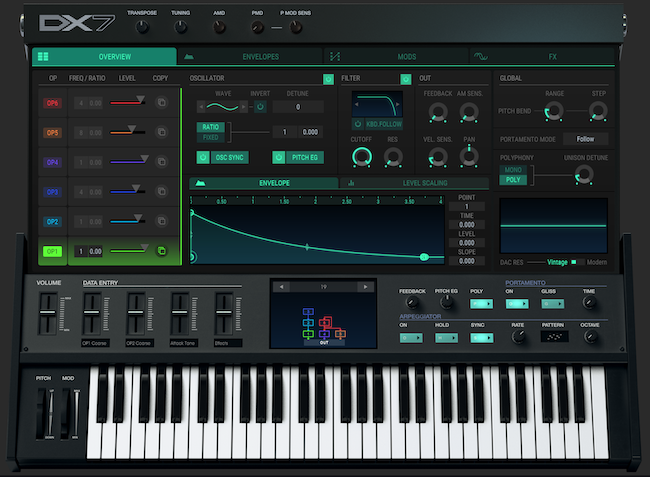
The Yamaha DX7
But with Arturia's make-over, not only are the controls simpler and more intuitive, but some effects weren't there before. Chorus, reverb and all manner of other adjustments turn the emulation into a powerful but nuanced modern sound generator. It's much easier to experiment with than the original, which was a bit of a nightmare unless you had a doctorate in FM patch design.
Another example of this sort of enhancement is the seminal Yamaha CS80, a monstrous synth in every way - it weighed 220lbs / 100kg and was a mass of individual circuit boards and wiring looms. Keeping a real one of those going would be a fulltime job, but the Arturia version does away with that complexity and makes it playable in a way that it never was before.
Arturia has tamed it and in doing so made it almost infinitely more playable. You can make instant soundtracks with this synth. Just select the preset: "70's Sequence”, hold down a low C or D and slowly move the low pass filter, perhaps with a bit of resonance. That's it. That's all you need!
There's so much in this collection of vintage synthesisers that you will never run out of new sounds and new ideas. I've had it for nine months now (sorry it's taken so long to write about, Arturia!) and I've only scratched the surface.
In fact, having so many options can be an issue if you're not a fulltime musician and don't have all day to explore. I have a way to deal with this.
Browse through the sounds and pick the ones that interest you most. Then explore those sounds in great detail - with different settings, aftertouch, etc, and get to know them really well. It's almost like each patch is an instrument in its own right with its dynamics and foibles. You won't use every sound like this, but you'll use the best sounds to their fullest ability and that can be uncannily good.
It's hard to come to any other conclusion than that the V Collection is unbelievably good value.
Arturia V-Collection costs 499 Euros.
Tags: Audio


Comments